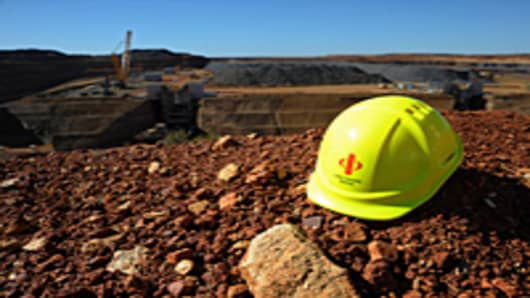Australia's jobless rate rose unexpectedly to hit its highest in over three years in March as employment fell and more people went looking for work, a disappointing report that led markets to narrow the odds on another cut in interest rates.
The Australian dollar eased off recent highs after Thursday's data from the Australian Bureau of Statistics showed the unemployment rate rose to 5.6 percent in March, from 5.4 percent the month before. That was above expectations for a steady outcome and the highest reading since November 2009.
Employment fell by a larger-than-expected 36,100, but that followed a huge forecast-busting 74,000 increase in February. Averaging the two months, employment growth was still reasonably solid.
(Read More: Australia Retail Sales Surge, Odds Lengthen on Rate Cut)
"We gave back some of those spectacular gains from the last month," said Michael Blythe, chief economist at Commonwealth Bank of Australia.
"At the moment they need about 25,000 jobs a month to stop unemployment from rising, so it's not quite enough. This (data) only reinforces the view the Reserve Bank has an easing bias."
Since cutting rates in October and December, the Reserve Bank of Australia (RBA) has been on hold at 3 percent amid signs the stimulus was slowly working though the economy.
Yet it has also left the door open to an easing should it be needed to support demand. The flow of recent data had showed enough of a pick up, particularly in retail sales, for the market to shave expectations on a cut.
But the jobs numbers seemed to put an easing back on the table. Swap rates now imply around 24 basis points of easing ahead, compared to 16 before the data.
Still, a move is considered unlikely at the next policy meeting in May, in part because the very volatility of the jobs figures might lessen their impact on policy.
So big was February's rise that some analysts suspected much of it might be statistical noise which could be reversed in March.
More Wholesaling Than Manufacturing
The ABS releases the industry breakdown of employment quarterly. The latest report for the three months to February, which was out last month, showed wholesaling accounted for the lions share of new jobs, perhaps reflecting the huge growth of online sales and services.
(Read More: Australia Consumer Confidence Falls in April)
Also adding jobs were healthcare -- the single biggest employer of all -- public administration, education, construction, and hotels and restaurants.
Job losses were concentrated in manufacturing, which has been suffering mightily under the weight of a high currency.
Just this week, General Motors announced 500 jobs losses at its Australian unit, Holden, and blamed the currency for its inability to compete with Japanese and South Korean carmakers.
So far though, policy makers have resisted all calls to try and rein in the currency, in large part because they doubt intervention would work.
RBA Assistant Governor Christopher Kent on Wednesday said there were sign industry was learning to live with a high dollar by becoming more productive and the central bank was a long way from having to consider extreme measures such as intervention.


